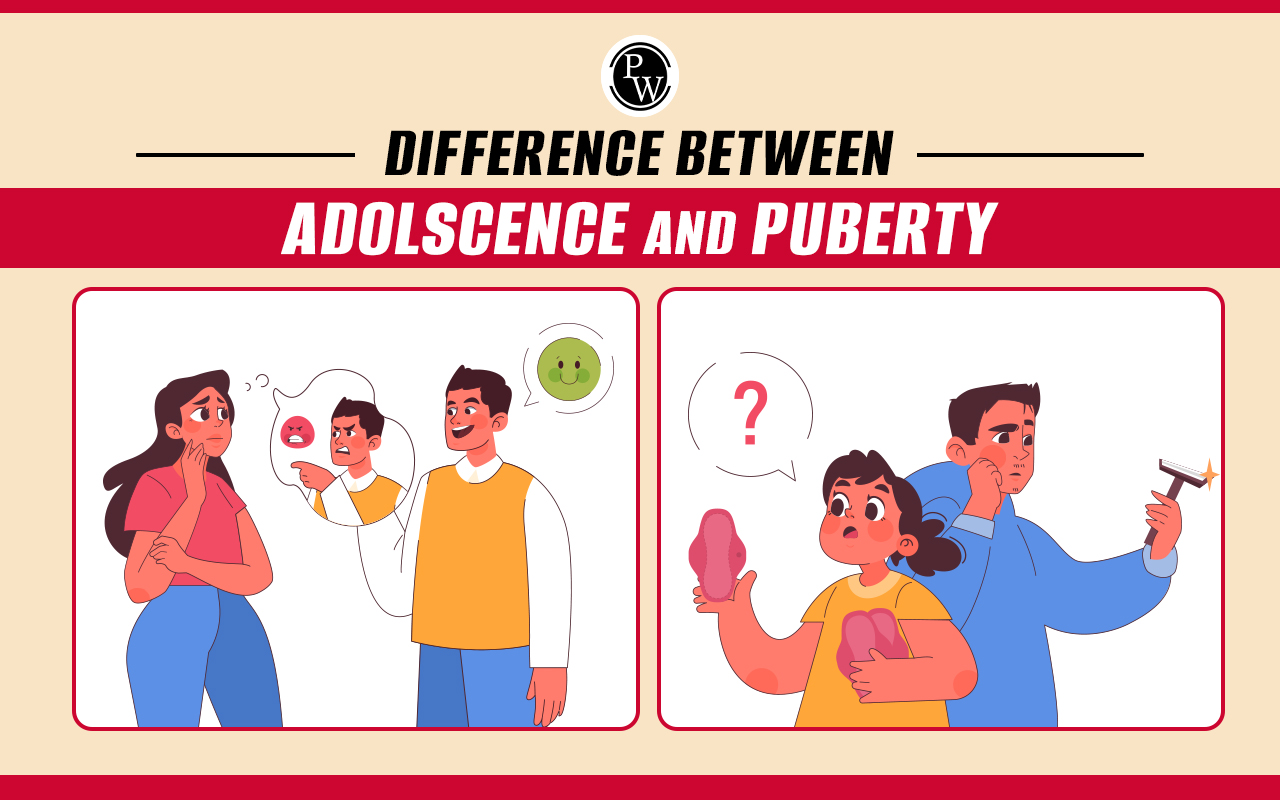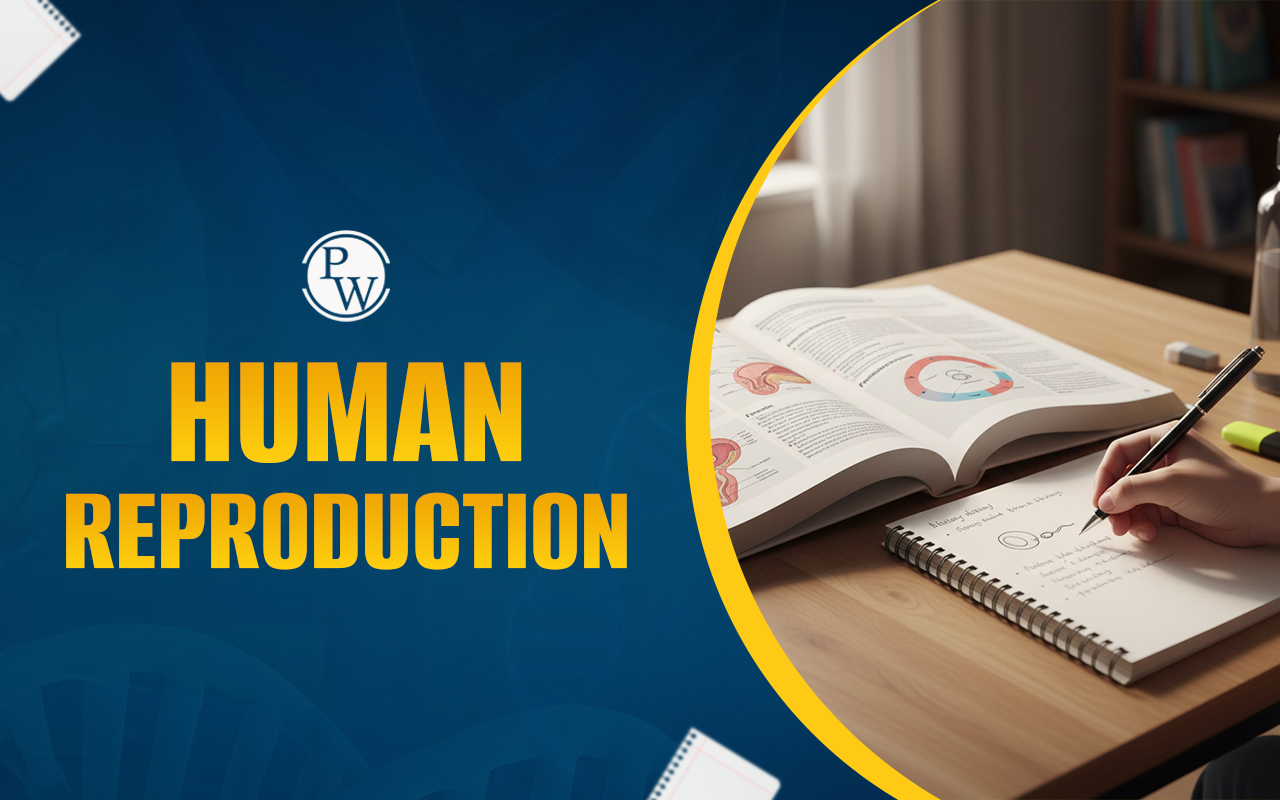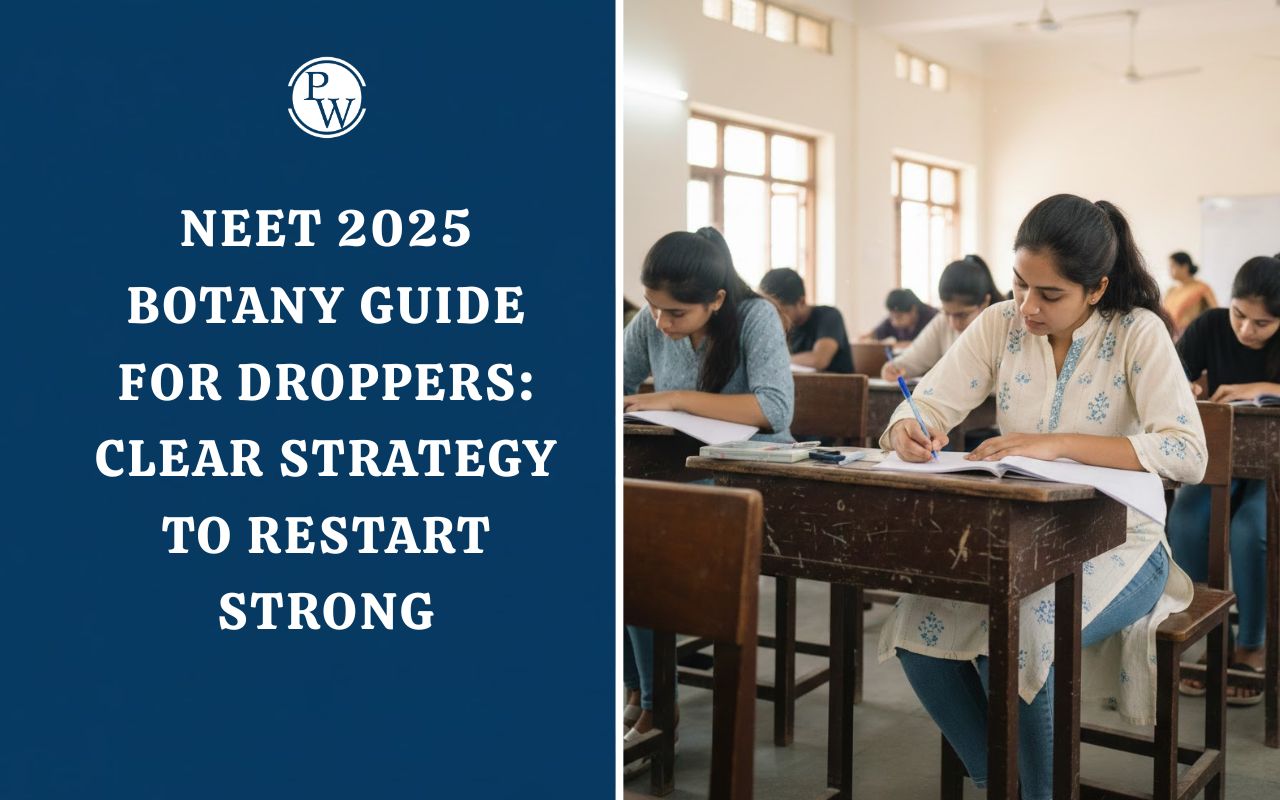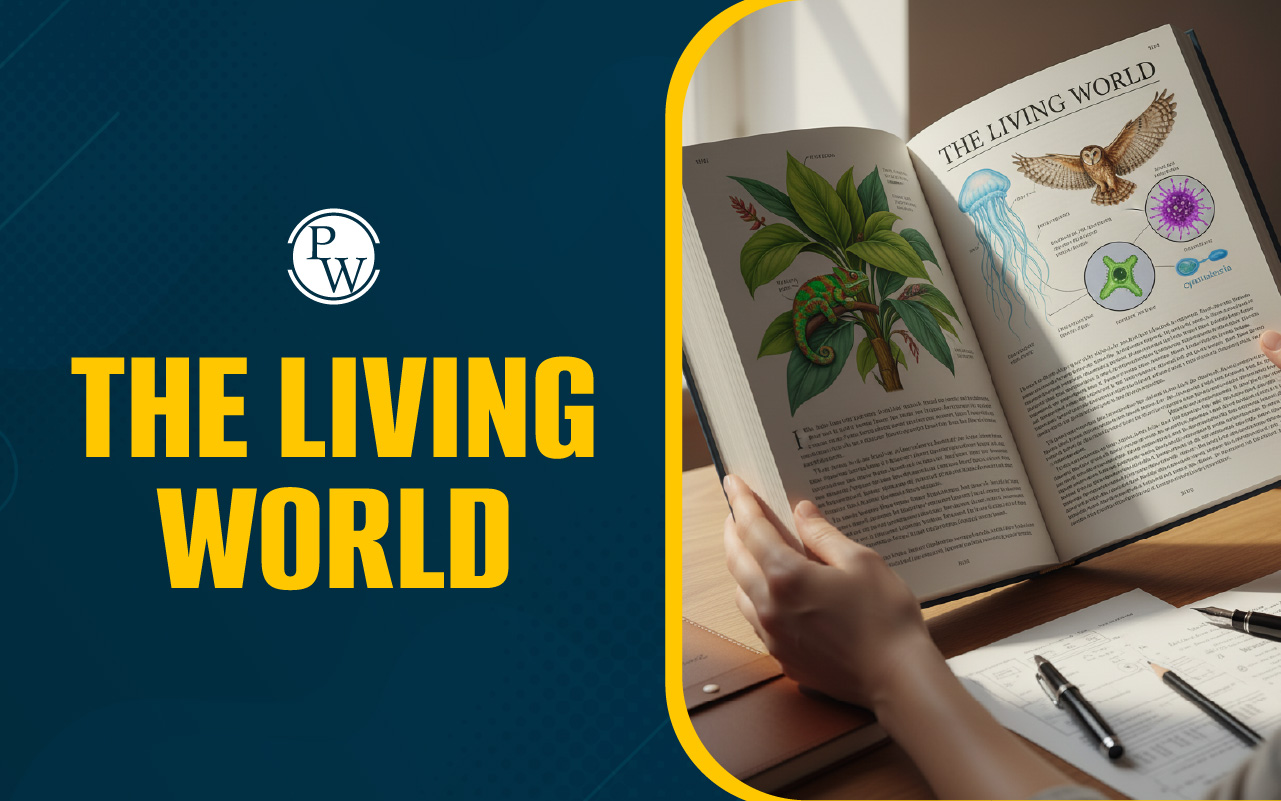

Difference between Adolescence and Puberty: The journey from childhood to adulthood is a transformative experience marked by various physiological, psychological, and social changes. Two crucial stages in this metamorphosis are adolescence and puberty. While often used interchangeably, these terms encapsulate distinct aspects of the developmental process. In this article, we’re going to break down the difference between adolescence and puberty in detail!
| NEET Biology Syllabus | NEET Biology Diagrams |
| NEET Biology MCQ | NEET Biology Chapter wise Weightage |
| NEET Biology Notes | NEET Previous Year Question papers |
Difference Between Adolescence and Puberty Overview
Adolescence refers to the transitional period between childhood and adulthood, encompassing various physical, psychological, and social changes. It is a multifaceted stage characterised by the exploration of identity, development of cognitive abilities, and the establishment of a sense of autonomy. On the other hand, puberty is a specific aspect of the adolescent journey, primarily focusing on the biological changes that lead to sexual maturity. This phase involves the activation of the reproductive system, resulting in the development of secondary sexual characteristics. While adolescence is a broader concept encapsulating cognitive and socio-emotional development, puberty is primarily concerned with the physical transformations associated with sexual maturation. Recognizing these distinctions is crucial for a comprehensive understanding of the developmental journey.Difference Between Adolescence and Puberty
Now, let's discuss the specific differences between adolescence and puberty across various dimensions:|
Difference Between Adolescence and Puberty |
||
|---|---|---|
| Aspect | Adolescence | Puberty |
| Age Range | Adolescence typically spans the ages of 10 to 19, although the boundaries can vary based on cultural, social, and individual factors. This phase is further divided into early adolescence (10-14 years) and late adolescence (15-19 years), each characterised by unique developmental milestones. | Puberty is a more narrowly defined period, usually starting around the age of 8 to 14. It marks the onset of hormonal changes that trigger the development of secondary sexual characteristics, such as the growth of breasts in females and the deepening of the voice in males. |
| Physical Changes | Physical changes during adolescence are diverse and encompass not only the development of sexual characteristics but also growth spurts, changes in body composition, and the maturation of the skeletal system | Puberty predominantly focuses on the biological changes associated with sexual maturation. In females, this includes the onset of menstruation, breast development, and the widening of hips. In males, puberty manifests through the growth of facial hair, deepening of the voice, and an increase in muscle mass. |
| Psychological Changes | Psychological changes during adolescence involve the refinement of cognitive abilities, emotional regulation, and the formation of a distinct identity. | While puberty primarily addresses biological changes, it also intersects with psychological aspects. The surge of hormones during puberty can influence mood, emotions, and behaviour. |
| Social and Emotional Aspects | Socially, adolescence is characterised by an increased desire for independence and the formation of peer relationships. | Puberty's impact on social and emotional aspects is intertwined with the broader context of adolescence. The physical changes brought about by puberty can influence an individual's self-perception and social interactions. |
| Duration and Stages | Adolescence is a more extended phase, typically several years. It can be divided into early, middle, and late adolescence, each stage characterised by specific developmental tasks and challenges. The duration of adolescence allows for a more comprehensive exploration and consolidation of various skills and abilities. | Puberty is a relatively shorter phase, with the most significant physical changes occurring over a few years. While the hormonal changes initiated during puberty continue into adolescence, the acute period of rapid physical development is relatively brief. |
What is Adolescence?
Adolescence is a transitional phase marking the bridge between childhood and adulthood. It is a dynamic period characterised by physical, cognitive, and socio-emotional changes, laying the foundation for an individual's identity and future development. Here are some of the characteristics of Adolescence:- Identity Exploration: Adolescents engage in a process of self-discovery, exploring their values, beliefs, and personal interests. This exploration often involves trying out different roles and experimenting with diverse experiences.
- Cognitive Development: Cognitive abilities undergo refinement during adolescence. Critical thinking, problem-solving skills, and abstract reasoning improve, contributing to a more sophisticated understanding of the world.
- Socio-Emotional Development: Adolescents experience heightened emotional intensity and increased self-awareness. The formation of peer relationships becomes crucial, and individuals begin to establish a more mature understanding of social dynamics.
What is Puberty?
Puberty is a specific stage within adolescence marked by the activation of the reproductive system and the development of secondary sexual characteristics. It represents the biological aspect of the broader adolescent journey. Here are some of the biological processes during puberty:- Hormonal Changes: Puberty is triggered by hormonal changes, primarily involving the release of sex hormones such as oestrogen in females and testosterone in males. These hormones play a key role in the development of sexual characteristics.
- Development of Secondary Sexual Characteristics: Secondary sexual characteristics are observable physical changes that differentiate males and females. In females, this includes breast development and the onset of menstruation, while in males, it involves the growth of facial hair, deepening of the voice, and increased muscle mass.
Difference Between Adolescence and Puberty FAQs
How does technology influence adolescent behaviour?
Technology can impact social interactions, body image, and mental health. Encouraging responsible usage and open discussions helps mitigate potential negative effects.
Are there gender differences in the experience of puberty?
Yes, biological differences contribute to distinct experiences. Acknowledging and understanding these differences promotes empathy and support.
Can adolescents experience stress-related issues?
Yes, academic pressure, peer relationships, and hormonal changes can contribute to stress. Developing coping mechanisms is essential.
Is there a connection between puberty and sleep patterns?
Hormonal changes during puberty can affect sleep patterns, emphasising the importance of healthy sleep hygiene for overall well-being.
How can communities support adolescents during this stage?
Community involvement, creating safe spaces, and promoting awareness of adolescent issues contribute to a supportive environment for growth and development.
🔥 Trending Blogs
Talk to a counsellorHave doubts? Our support team will be happy to assist you!

Check out these Related Articles
Free Learning Resources
PW Books
Notes (Class 10-12)
PW Study Materials
Notes (Class 6-9)
Ncert Solutions
Govt Exams
Class 6th to 12th Online Courses
Govt Job Exams Courses
UPSC Coaching
Defence Exam Coaching
Gate Exam Coaching
Other Exams
Know about Physics Wallah
Physics Wallah is an Indian edtech platform that provides accessible & comprehensive learning experiences to students from Class 6th to postgraduate level. We also provide extensive NCERT solutions, sample paper, NEET, JEE Mains, BITSAT previous year papers & more such resources to students. Physics Wallah also caters to over 3.5 million registered students and over 78 lakh+ Youtube subscribers with 4.8 rating on its app.
We Stand Out because
We provide students with intensive courses with India’s qualified & experienced faculties & mentors. PW strives to make the learning experience comprehensive and accessible for students of all sections of society. We believe in empowering every single student who couldn't dream of a good career in engineering and medical field earlier.
Our Key Focus Areas
Physics Wallah's main focus is to make the learning experience as economical as possible for all students. With our affordable courses like Lakshya, Udaan and Arjuna and many others, we have been able to provide a platform for lakhs of aspirants. From providing Chemistry, Maths, Physics formula to giving e-books of eminent authors like RD Sharma, RS Aggarwal and Lakhmir Singh, PW focuses on every single student's need for preparation.
What Makes Us Different
Physics Wallah strives to develop a comprehensive pedagogical structure for students, where they get a state-of-the-art learning experience with study material and resources. Apart from catering students preparing for JEE Mains and NEET, PW also provides study material for each state board like Uttar Pradesh, Bihar, and others
Copyright © 2025 Physicswallah Limited All rights reserved.
Get App











